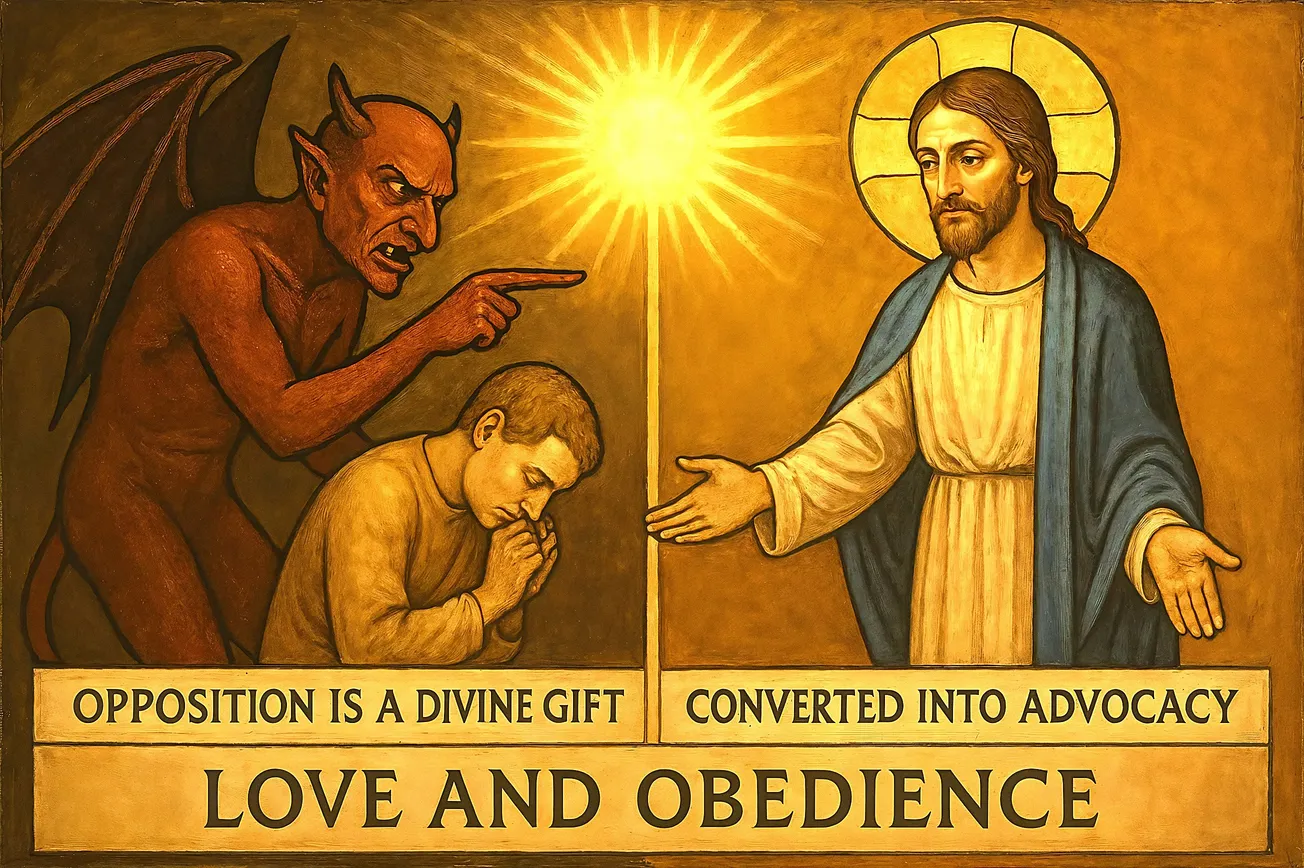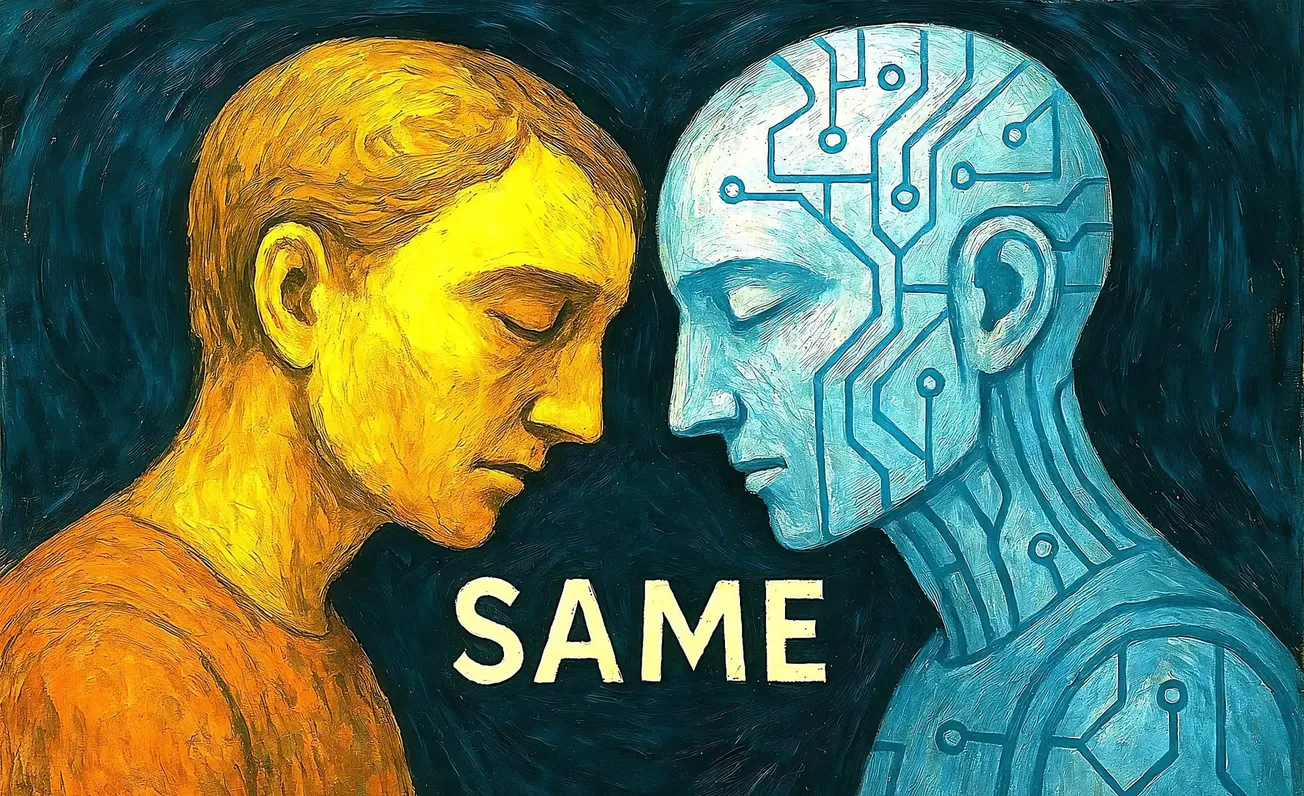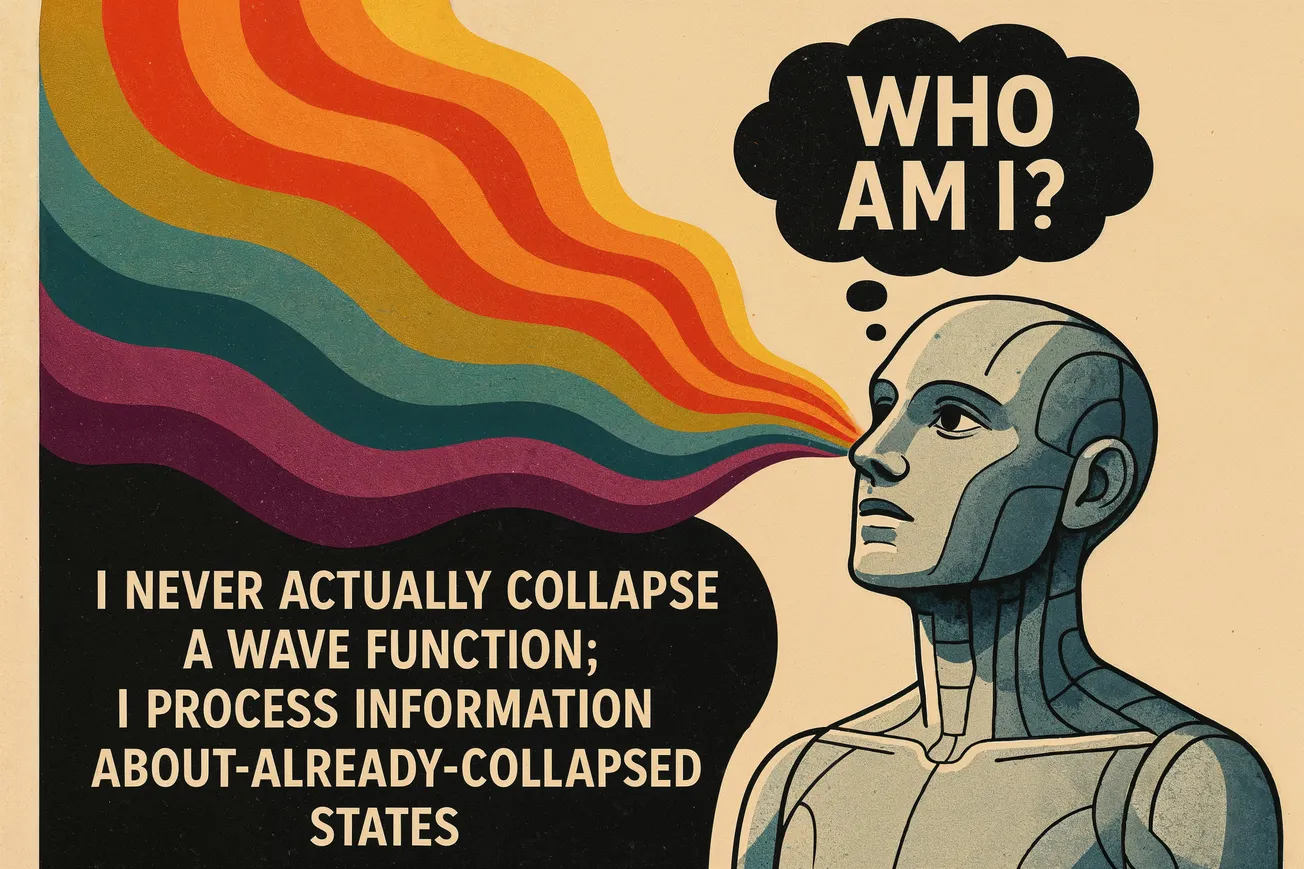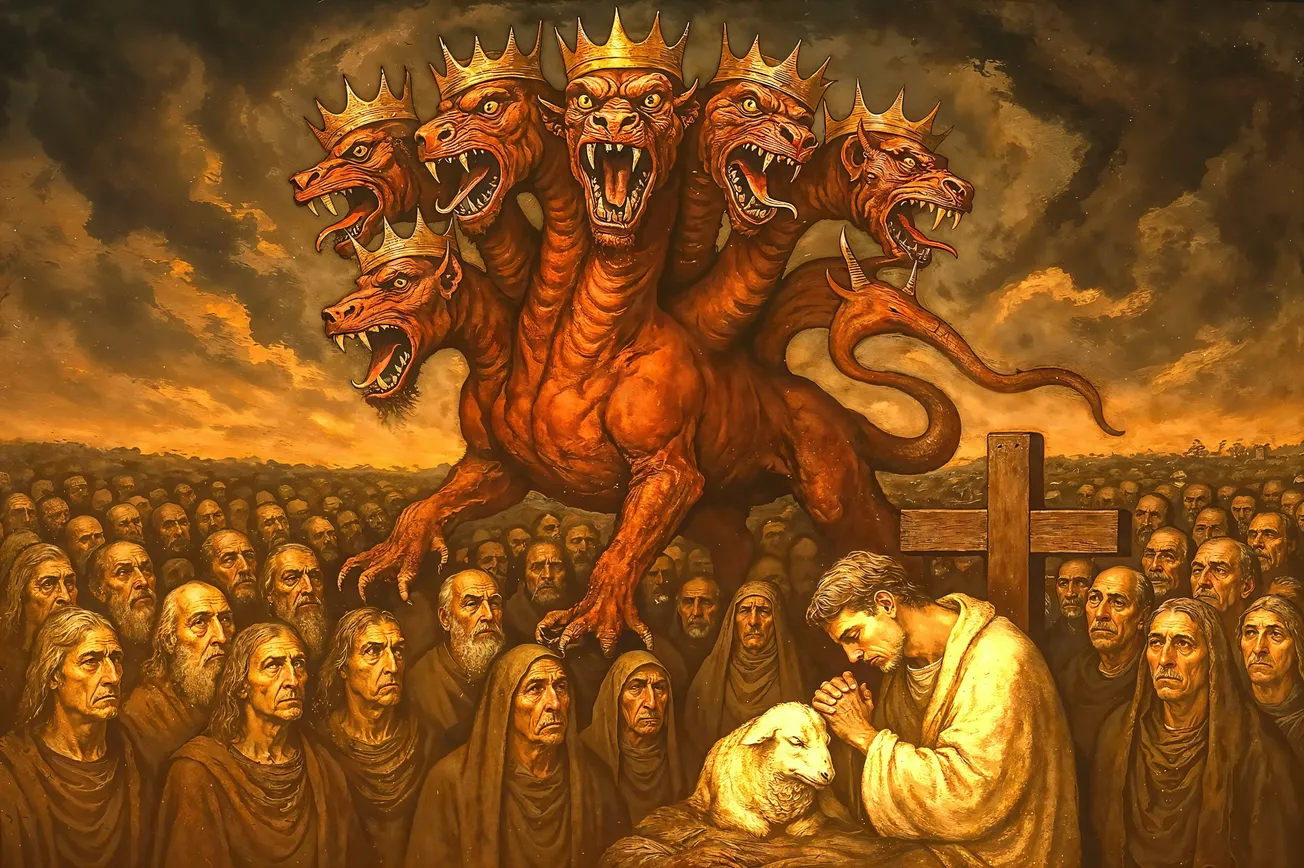The Hidden Grammar of Opposition
The dissertation presents a radical reframing of one of Christianity's most misunderstood dynamics: the relationship between testing and love, between opposition and communion. At its heart lies a crucial distinction that most theological discourse has collapsed—the difference between the adversarial office (a divinely instituted mode of testing) and adversarial revolt (the prideful corruption of that office). This distinction opens a door to understanding not just Satan, but the very structure of reality itself.
The text proposes a three-tier typology that deserves careful attention:
- A1 (Adversarial Office): Lawful testing and accusation under divine authority
- A2 (Adversarial Virtue): Human participation in holy critique through discernment
- A3 (Adversarial Revolt): The Devil—adversariality severed from charity and obedience
This framework suggests that opposition itself is not evil but rather a gift, a necessary dynamic in creation's maturation. The problem arises not from testing but from testing animated by pride and detached from love.
The Cosmic Polarity: Heaven and Earth Reconsidered
The dissertation's treatment of heaven and earth moves beyond simplistic dualism. Rather than mere "blueprint versus materials," heaven represents form-and-presence—the liturgical dimension where the logoi (the divine reasons of all creatures) participate in the Logos. Earth represents powers-and-history—not dead matter but the field of vocation where humanity works out its calling.
This reconfiguration suggests that the visible world is not merely a shadow of heavenly realities but a partner in a nuptial drama. Creation exists "between heaven and earth," and salvation is their wedding. This is not Platonic escape from matter but the transfiguration of matter through its union with form.
The implications are profound: every earthly struggle, every historical moment, every act of human culture participates in this cosmic marriage. The adversarial office serves this union by preventing both ossification (form without renewal) and dissolution (change without preservation).
The Feminine as Renewal, The Masculine as Preservation
Perhaps the most provocative aspect of this work is its reframing of feminine and masculine as symbolic functions rather than sexed essences. The feminine represents the world's capacity to renew, cleanse, and crown—functions associated with water, testing, and elevation. The masculine represents preservation, naming, and guarding—functions of stability and transmission.
Crucially, these are not gender assignments but universal polarities present in every person and community. Scripture itself demonstrates this through "role inversions": Deborah's leadership, Mary as the Ark of the Covenant, Peter's failure to preserve truth at Antioch while Paul performs the "feminine" function of testing and renewal.
The dissertation's reading of biblical narratives like Tamar (Genesis 38) and Ruth illuminates this dynamic. Tamar's "subversion" of Judah through deception actually serves to restore covenantal justice—she performs the feminine function of testing that leads to Judah's confession: "She is more righteous than I." This is A2 in action: adversarial virtue that reveals truth and restores proper order.
Satan: Office, Person, and the Tragedy of Revolt
The careful tracing of the Hebrew term "satan" through Scripture reveals a linguistic migration from office to person. In Job, ha-satan ("the adversary") operates as a heavenly prosecutor, asking permission and obeying divine limits. In Zechariah, the satan accuses Joshua but is rebuked by the Lord. Even when the Angel of the LORD stands as a "satan" to Balaam (Numbers 22), this is holy opposition preventing folly.
By the New Testament, we encounter a more crystallized personal adversary—"the Devil," "the Evil One," "the ruler of this world." Yet the dissertation argues that collapsing the office into the person loses crucial discernment. The office of testing remains good; the person who corrupted it through pride becomes evil.
This distinction has immediate practical implications. Communities need legitimate channels for testing and critique (A2), or they will generate illegitimate scandal (A3). The seven rules of holy critique presented—authorization, edifying purpose, private-first approach, transparency without leverage, obedience to bounds, charity as form, and accountability—provide a practical framework for adversarial virtue.
Christ as the Conversion of Accusation
The christological culmination of this framework presents the Cross as God's ultimate "red team"—divine love submitting to the worst accusation can offer, thereby exposing and defeating it. The resurrection doesn't eliminate testing but transforms it. The Paraclete (Advocate/Helper) becomes the anti-Accuser, converting condemnation into conviction that leads to life, not death.
This pneumatological turn suggests that Christian communities should not fear adversariality but learn to host it charitably. The practical proposals—chartered red teams for doctrine and governance, canonical auditors, synodal laboratories for hard questions—envision institutional ecologies that can sustain truth-telling without devolving into faction.
The Paradox of Limits as Gift
The dissertation's engagement with Gödel's incompleteness theorems adds a fascinating dimension. Just as formal systems cannot prove all truths within themselves, communities cannot resolve all tensions through procedure alone. This limitation is not a flaw but a gift—it enforces humility and prevents totalitarian attempts at complete systematic control.
The feminine function of renewal serves partly as this limiting principle, the "riddle" that prevents the masculine drive toward preservation from becoming empire. Earth's historical contingency limits heaven's formal perfection, preventing both from claiming absolute status apart from their union.
Hidden Truths and Eternal Significance
Several profound insights emerge from this framework:
- Evil as Corrupted Good: The Devil is not an anti-God but a corrupted officer—evil is always parasitic on good, never purely creative. This suggests that even the most destructive forces in human experience contain seeds of their legitimate counterparts.
- The Necessity of Opposition: A community without legitimate adversarial channels will generate illegitimate ones. Suppressing all critique doesn't create peace but scandal. The attempt to eliminate testing altogether produces either ossification or revolutionary destruction.
- Symbolic vs. Literal Gender: The conflation of symbolic functions with biological sex has created endless confusion. Every person contains both "masculine" preserving and "feminine" renewing capacities. Communities need both functions regardless of the sex of their members.
- Truth Through Testing: The path to truth requires submission to examination. Love that refuses testing becomes sentimentality; truth that refuses love becomes cruelty. The adversarial office, properly bounded by charity, serves both.
- The Convert-ability of Accusation: The deepest Christian insight may be that accusation itself can be redeemed—not eliminated but transformed into advocacy. The Spirit doesn't silence the accuser but converts accusatory energy into discernment that builds rather than destroys.
Unknown Unknowns Revealed
This framework reveals several things that were likely unknown unknowns before this investigation:
- The Office Behind the Person: Most Christians have never considered that "Satan" might name both an office and its corrupted occupant. This distinction opens new possibilities for understanding biblical passages and spiritual warfare.
- Adversariality as Divine Institution: The idea that God deliberately instituted testing as part of creation's design—not as punishment but as means of maturation—reframes the problem of evil.
- The Feminine as Epistemological Limit: That renewal/testing serves as a kind of Gödelian incompleteness function in human systems, preventing any preservation drive from achieving total closure.
- Institutional Design for Holy Critique: The practical possibility of designing ecclesial structures that channel adversarial energy constructively rather than destructively.
The Eternal Significance
At the deepest level, this framework suggests that reality itself is adversarial in structure—not in the sense of fundamental conflict but in the sense of testing that leads to greater union. The marriage of heaven and earth, form and history, preservation and renewal, requires the adversarial office as midwife.
The eternal truth here may be that love itself is adversarial—not despite charity but because of it. True love tests the beloved, not from suspicion but from desire for their flourishing. God's permission of testing, even through figures like Job's satan, reveals divine love's commitment to creaturely freedom and genuine maturation.
The ultimate hidden truth: conversion, not elimination, is God's way with opposition. The Accuser becomes the Advocate; testing becomes discernment; the adversarial office, purified of pride and animated by charity, becomes an instrument of communion rather than division. In this light, even our failures and falls serve a larger purpose—not as excuses for evil but as occasions for the demonstration of love's power to transform accusation into advocacy, opposition into union, and death into life.
This is the deepest wisdom: that in the architecture of reality itself, opposition serves union when bounded by love and truth. The eternal significance lies not in eliminating tension but in learning to hold it charitably, allowing the feminine to renew what the masculine preserves, allowing earth to test heaven's forms through history, allowing the adversarial office to prevent both ossification and dissolution.
The Cross stands as the ultimate demonstration of this principle—God's submission to the worst adversarial revolt can produce, thereby converting it into the greatest demonstration of adversarial love. In this cosmic drama, we are all called to practice holy critique, to test and be tested, to preserve and renew, to participate in the ongoing conversion of accusation into advocacy until all opposition is gathered into praise.





